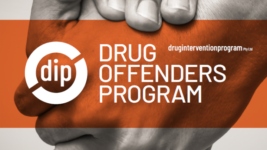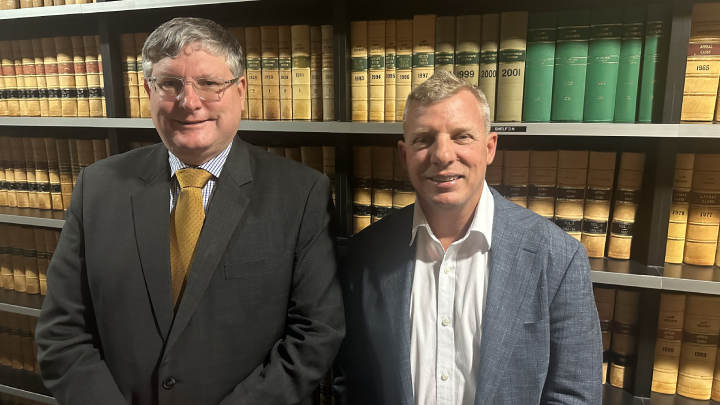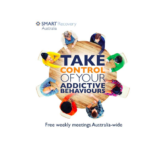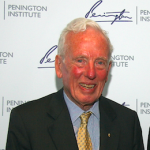The Drug Offenders Program: Shane Prince SC and Jim Finnane on Early Intervention

The hardline approach taken to psychoactive drugs has pushed their use underground, which causes barriers to seeking help for those who develop problematic use, as they’re admitting to a crime, while the funding of an ever-increasing habit can also become reason to commit other crimes.
Global drug prohibitions commenced early last century and the heightened law enforcement approach to the policing of these substances, the war on drugs, began in 1971, when then US president Richard Nixon launched it.
But a general understanding that the drug war approach is a failure has become apparent over the last two decades, and with that so too, has an awareness that drug use and dependency should be treated as a health problem and not crime taken hold.
And these concepts have since been reflected within the NSW criminal justice system, as it now often prosecutes drug-related crimes in purpose-run Drug Courts, while offenders can now partake in the pretrial MERIT program, which can result in a lesser sentence for those completing it.
A few years ago, however, some NSW barristers and a drug treatment worker realised that while drug diversionary programs were a welcomed improvement on the extremely punitive methods of the past, the new approaches only applied to people after their drug issue had grown out of control.
So, that’s where the Drug Offenders Program comes in. It’s an online course that’s preventative, so while the subject undertaking it may not have developed a substance abuse disorder, their recreational use may be of concern, or it might have led to them being arrested and charged.
Available on the Impairment Training website, the Drug Offenders Program is a course that gives participants an appreciation of the criminal justice system, an understanding of how drug use could see them caught up in it and an awareness of the treatment programs to curb problematic use.
Sydney Criminal Lawyers spoke to two of the minds behind the Drug Offenders Program, barrister Shane Prince SC and program director Jimmy Finnane about why early intervention is needed, the success it has brought clients so far and the favourable approach the courts have taken to it.

The Drug Offenders Program is a course for those charged with any crime where drug use has played a factor or those who are concerned that their substance use may lead to a situation where they are charged with an offence.
So, what sort of crimes are we talking about in terms of who can do the course? Is there a focus upon drug offences?
Prince: Our emphasis is anyone who’s entering the criminal justice system, or even likely to enter the criminal justice system, because of drug and alcohol use.
So, anybody can do the course. We have designed the course for people who are entering the criminal justice system.
We’re not so focused on the nature of the crime per se, but we are more focused on when a crime, or potential criminal behaviour, has been influenced by drug or alcohol use.
The course has got both drug and alcohol awareness elements, and it’s also got elements that explain the criminal justice system.
That’s why it’s focused that way. But it is available for anybody who wants to undertake the course.
We would encourage anybody who is perhaps concerned about a loved one or about themselves, if they find they’re spiralling into a situation where they may enter the system, take the course.
We are focused on early intervention. We want to get to people before their problems get so big that they end up in strife.
So, if a father was concerned about their adult son’s drug use and the way it appeared to be leading him down a pathway to crime, this course would be meaningful for them?
Prince: That would be ideal. In fact, we had a mother and son do the course. And this one is what really makes it all worthwhile.
We had the mother and son do the course together. And the mother kept ringing Jimmy, because he’s the helpline, just to check she was doing the right thing.
And at the end of it she told Jimmy that it made a massive difference because by doing the course together, she and her son had had discussions that they’d never had before.
The mother had become better equipped to help her son with his problems, and the two of them could see where the help-seeking behaviours were critical.
Finnane: Her exact words were she was “feeling much less anxious about the whole ordeal” and she can “clearly see where her son is at the moment” and she now has somewhat of an idea about how to get him some help.
Prince: And that’s what we want, as the earlier they do it, the more value they get in terms of being able to provide proper instructions to their solicitors, as well as knowing they should be getting a solicitor, knowing where to get medical assistance and the steps they can take to show the court.
If it is a court matter, they can then show it that they’ve done a course and taken the opportunity to address the underlying problems.
When an individual in NSW has been charged with a crime, they usually approach a lawyer for representation.
So, why should these people, who’ve already got someone to attend to their matter, then further participate in the Drug Offenders Program? And broadly, what does it cover?
Prince: What it does is it helps them in a way that a lawyer can’t. That’s in terms of limits on a lawyer’s time.
We have three hourlong modules explaining an overview of the criminal justice system and how it works.
A busy lawyer doesn’t have time to sit down and explain all these things to the client in the same sort of detail that they’d like to.
We have people like Phil Boulten explaining how the system works. And the program takes pressure off solicitors in terms of giving a background to their clients, which, we are hoping will mean, that the clients better understand what solicitors are trying to get out of them.
Also, if they’re committed enough to sit down and do six hours of training, and they demonstrate that to the court, by providing the certificate of completion, it’s a powerful indicator in the client’s favour that they’re serious about taking some steps to address their problems and have engaged in help-seeking behaviour.
There is no guarantee of anything, obviously. But it shows a level of seriousness that they’ve devoted six hours of their time, and have, at least, been told about all these things, which, frankly, we all wish we had the time to sit down and take clients through if we could. But we don’t have the time.
In a practical sense, how does a client undertake the Drug Offenders Program? And there are six modules that are involved. So, what do they cover
Prince: What they have to do is go to the website and purchase the program.
The Drug Offenders Program has been made available for free at Dubbo and Wollongong Aboriginal Legal Services but we would like to expand on this.
The price we’ve set is roughly the same as the Traffic Offenders Program, as we thought that was the right point for the pricing.
And we’re hoping to work with government at some stage to get funding for people who can’t afford to buy the course.
But they buy the course and get sent their login details by email. And then they can then do the course at their own pace.
The six modules have to be done sequentially. You can’t jump ahead or skip any of it.
The first module is Entering the Justice System, and that’s general information about what to expect when entering the justice system and a broad overview of what that looks like.
The second module is Navigating the Justice System, and it goes into rights and responsibilities in more detail. But again, it is general information.
The third module is Your Health and Wellbeing. It discusses mental health and drug and alcohol use and the interrelationship between those things. And at that point there is a self-assessment tool.
Finnane: So, within module three, there is a self-assessment tool that has about forty questions relating to behaviours around using drugs.
You go through those questions and answer them, and at the end, it shows you a tally, which gives you an idea of where you are sitting on that sliding scale of dependency.
That tool comes from Narcotics Anonymous. It has been used for decades now. And it is called, Am I an Addict?
It is something that many people have used to start their journey of recovery, or just to realise where they are at.
They might find that where they are now is not so bad, but they can see that if they continue down that path, especially after having done the course, what the potential outcomes of their risky behaviour are and what the signs to look for are.
Prince: That then leads to two modules called Pathways to Treatment and Recovery. So, Part 1 looks at early intervention treatment options and suggests a range of treatment options that exist for people.
This promotes help-seeking behaviour. And one thing comes up and that is how important GPs are in this process.
There are a whole range of programs out there. Lots of programs that have developed over time.
But we try to draw these things into one place and make sure people know that they can work out what is best for them by going to their GP, as a lot of people don’t really know that.
The next module is Pathways to Treatment and Recovery Part 2, which deals with the importance of long-term support and the lifelong nature of recovery. And it deals with the long-term approach that needs to be taken.
Finnane: Those modules have short videos of Diane Young, director of clinical supervision at South Pacific Private. She’s been filmed talking about different types of therapies. And how one therapy works together with another therapy, because often in recovery you need to use dual therapies.
The modules point out that not each therapy suits each person. Everyone is an individual and certain things help certain people.
And further all the drug and alcohol content has academic oversight from Professor Ken Pidd.
Prince: Obviously, people buy the whole course and have to do the whole course. So, there will be treatment options and things, which aren’t really appropriate for them.
But by sitting there and having to learn about and go through all the different options, it gives people a good insight as to the overall picture of where they could end up or what category that they could end up being in.
Finnane: The therapy may not be relevant to them initially, but if they stay on that path, they have a good idea of where they are heading and what therapies they may need in the future.
And also, the participant has access to the course after purchase for at least another five years. So, there is nothing stopping them from logging back in to the course and resitting a module or revising a particular area that was useful, or if they have forgotten something.
Prince: Then the final module is Potential Outcomes from the Criminal Justice System, and that’s where we canvas the escalating types of outcomes that they could expect and equally the benefits of the outcomes of addressing their behaviours properly to understand them.
How long has the Drug Offenders Program been running? How would you assess its results? And how has it been appraised by the courts?
Prince: We’ve been putting it together for years now. It’s been live for about a year. But we’ve had a soft opening. We haven’t had a formal opening.
But we’ve been going for a while now, and we have been getting some pretty good results.
Finnane: We’ve had about 200 people complete the course. The last six months have been our busiest time.
And one of the biggest indicators that the course is being used appropriately is that we nearly have a 100 percent completion rate.
So, someone buys the course and within three weeks, I’m being emailed their certificate, which is really encouraging, particularly as with online training, a lot of people buy the course and then they don’t finish it.
That’s not the case here. And we’ve also had some great testimonials from the Aboriginal Legal Service.
If someone is having trouble logging on, or they get caught on a page, I usually get rung up. So, I have the most contact with participants and mostly, the feedback on the course is great.
The other day, a woman who completed the course referred it to her husband, as she felt he needed to do it too.
So, people who are doing this online course are able to call someone directly about it at any time?
Finnane: Yeah. That’s me. And I work in drug and alcohol and crisis management. I am completely devoted to the program. We’ve built it from the ground up, Shane and I.
Prince: And the late Michael Finnane KC. He was there from the very beginning. So, sadly, he has passed away, but he was a real proponent of this course, and he designed a lot of the content in the legal modules.
So, on each of the certificates we issue, we have a line that says that it is issued in the memory of Michael Finnane KC.
So, why should legal firms, like Sydney Criminal Lawyers, be aware that this course is available, when they’re dealing with their clients?
Prince: It is a great tool that they can give to their clients to provide comfort to the magistrate that they’ve taken their situation seriously, that they’ve dedicated the necessary time to complete the course, and that they’ve been exposed to the valuable content that’s contained in it.
So, when a solicitor is looking around for material to place before the court, this is a very valuable and useful piece of information to be able to put before it to show that the client has taken the matter seriously.
So, it can act as a mitigating factor in sentencing?
Prince: Yes, we have seen it taken into account in that way.
Finnane: We’ve been told by countless people presenting this certificate to the court that the magistrates have been taking it into account.
Prince: Obviously, sentencing is a very broad discretion, and we’ve had the support of the Chief Magistrate and the Deputy Chief Magistrate in the Local Court Innovation Committee, and we have had magistrates taking course participation into account when sentencing.
We think it is a valid discretionary factor to be putting forward.
And lastly, attitudes towards drug laws are changing in the community. This process has long been underway, and so there are already diversionary programs in place to deal with drug offenders. These include the MERIT program, Drug Court, and Circle Sentencing.
So, what void would you say the Drug Offenders Program is filling?
Prince: We are at a much earlier stage than any of those programs. Those are very good programs. And there is a commonality in all of these measures that treats drug use as a problem that needs to be addressed by people and something that underlies criminality and criminal behaviour.
So, it is in everybody’s interest if it can be addressed. And as many weapons in that armoury as possible are to be welcomed.
We really are at a much earlier stage. With MERIT, the T stands for treatment. It is an intensive program. MERIT is an outstanding program.
But it provides treatment to people who are someway further down the path of their interactions with the criminal justice system.
Finnane: It’s for systemic drug and alcohol problems. By the time you get to MERIT, you really are displaying antisocial behaviour and serious drug and alcohol issues.
Prince: And the places are limited. In fact, we are most likely to be at looking at adding something to people who are ineligible to get into MERIT. And we hope that we help people to never have to use MERIT.
Likewise, the Drug Court, there you’re looking at offences when the offender is highly likely to get time in prison.
They have to have pleaded guilty or indicate they will plead guilty to enter the Drug Court. They have to be dependent on the use of prohibited drugs.
We start at a much earlier stage than dependency. We try and avoid dependency and try to avoid people getting to the point where they are facing full time imprisonment or conviction.
So, the Drug Court, again, is at a very different stage. And that is really why we put this program in place, because there didn’t seem to be any educative early-stage intervention program that would allow people to address their drug and alcohol issues, before they become such a large problem that it would be in the Drug Court or the MERIT program.
We really see our program as complementary to those. We hope to take work away from them, in a good way.
We hope that people never get to that stage. It is in everybody’s interest for people not to get to that stage, and that is where we are focused.
We are trying to get people to learn help-seeking behaviours at the earliest possible opportunity. And when people first engage with the criminal justice system, we think it is a really important opportunity for them to start to address problems that they might have not been addressing.
And it would be a waste to let that opportunity go by.







